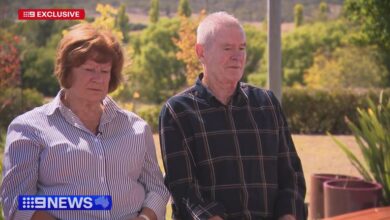Government reveals pension changes to get more Aussies to work

Older Australians wanting to work can earn up to $11,800 before their pension is affected as stated in the new employment white paper released Monday.
The 252-page paper outlined 190 policies with 70 already implemented and 80 underway; 31 with long-term reform directions and nine with immediate actions.
Treasurer Jim Chalmers said these policies are designed to future-proof Australia's workforce and address the economy's crippling labour shortages.
"This employment white paper, which is called Working Future, is all about helping more Australians make the most of the big changes underway in our economy and our society as well," the Treasurer said.
"Our objective here is a more dynamic and a more inclusive labour market as part of a more dynamic and inclusive economy where more workers and businesses and communities can adapt and thrive and benefit from change.
"The white paper is part analysis, but mostly about action."
Speaking in Adelaide, Mr Chalmers was joined by the Minister of Families and Social Services, Amanda Rishworth, who introduced two measures that were announced at the conference that looked at the "structural barriers in our social security system".
The first measure extended from last year's Jobs and Skills Summit, allowing older Australians a working opportunity and extra income.
"We are announcing today we will make permanent the measures that will allow for a higher balance in a pensioner's income bank of $11,800, that they will be able to earn through seasonal or ad hoc work before their pension is affected," Ms Rishworth announced.
"Of course, many pensioners want to retire when they reach pension age, but some would like to do seasonal work or a shift here and there.
"This is about smoothing that pathway from work into retirement and ensuring that pensioners can still do some work and still receive their full pension."
The paper also said the previous temporary $4,000 upfront payment would be made permanent and given to older Australians who continued to work.
Seniors and veterans will continue to be able to work more and earn thousands of dollars more before their pension payments are reduced to boost workforce participation.
This means the current maximum Work Bonus balance will be $11,800 rather than the previous $7,800.
Under the Treasurer's initiative to increase workforce participation, welfare recipients can use their concession cards and other social security benefits for 24 weeks instead of the current 12 weeks.
The measure will be introduced from July 1 next year and expects to benefit 138,000 welfare recipients at a cost of $42.8 million in its first three years.
Aged and Community Care Providers Association (ACCPA) chief Tom Symondson welcomed the paper and supported older Australians returning to the workforce.
"Many older Australians are perfectly placed to work in the aged care sector. They have the compassion, life experience and empathy to care for our most vulnerable," Mr Symondson said.
"It makes sense that older Australians who still want to work should be encouraged.
"Age should not be a barrier to people continuing to work and contribute to the care economy."
The proposed changes that are likely to generate the most controversy are expected to be around the salary threshold for a new highly-paid permanent skilled visa, changes to workplace mobility rules for sponsored visa holders and the unions' role in forming labour agreements in the low-paid workers stream; for example, in the aged-care sector.
At the time of the paper's release, the unemployment rate sits at a record-low level of 3.7 per cent, with more than 430,000 job vacancies.
However, the rate is expected to rise in the upcoming months as the economy continues to slow down and vacant positions will lose their urgency.
Further adding to the government's concerns are the millions of Australians who want to work but continue to face barriers to participation.
Individuals with disabilities, those from minority groups, individuals with caregiving responsibilities, or those with limited skills have traditionally faced more significant challenges finding work.
The white paper was a product of around 12 months of work since the government's Jobs and Skills Summit, held in September of last year.
Email: [email protected]




